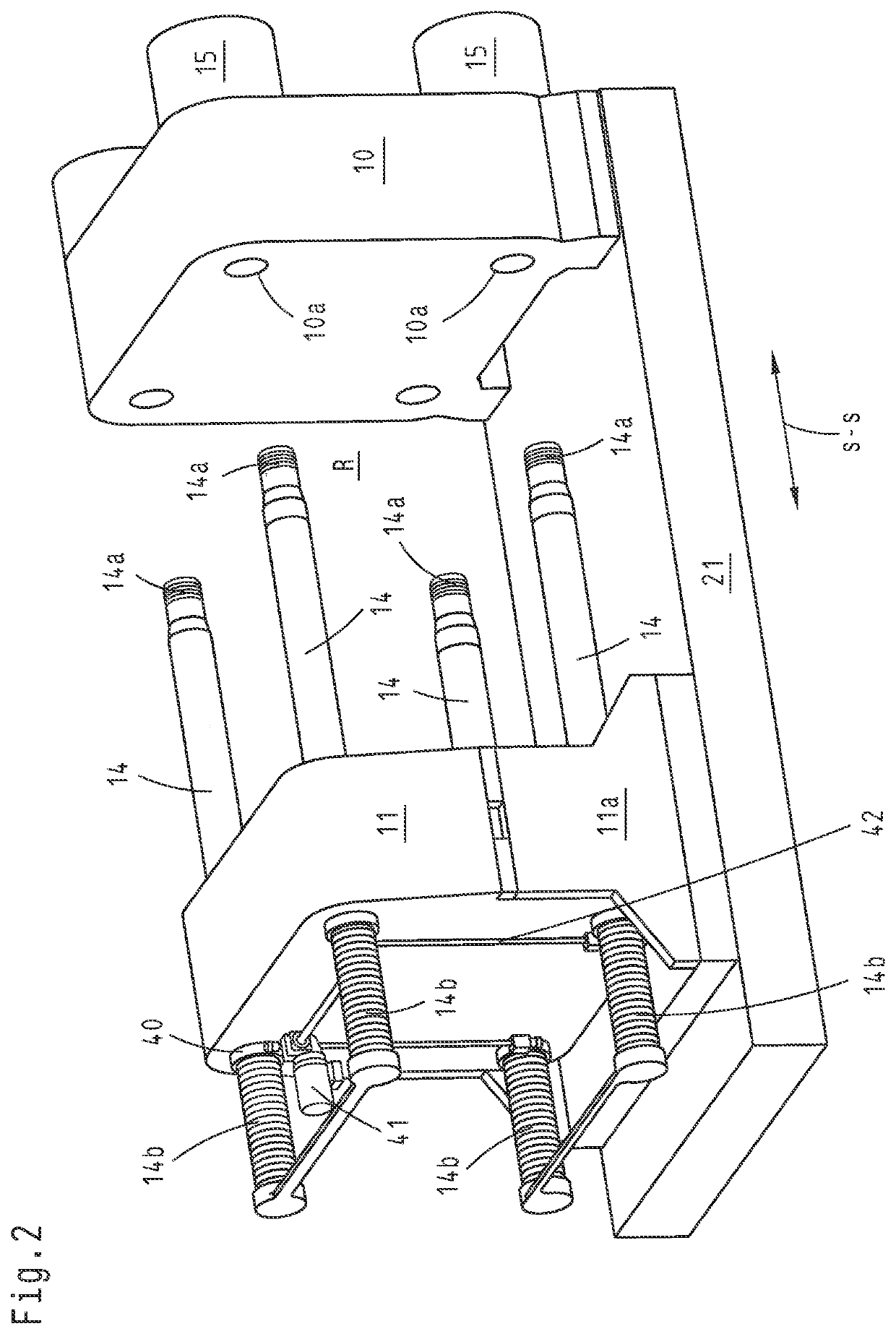Mold-closing unit for an injection molding machine, and method for locking a force transmission element
a technology of injection molding machine and locking element, which is applied in the field of molding closing unit for injection molding machine and the method of locking force transmission element, to achieve the effect of high degree of precision, smooth locking movement, and high degree of precision
- Summary
- Abstract
- Description
- Claims
- Application Information
AI Technical Summary
Benefits of technology
Problems solved by technology
Method used
Image
Examples
Embodiment Construction
[0046]The disclosure is now explained in more detail by way of example, with reference to the attached drawings. However, the embodiments are only examples, which are not intended to restrict the inventive concept to a particular arrangement. Before the disclosure is described in detail it should be pointed out that it is not restricted to the respective structural parts of the device and the respective method steps, since these structural parts and method may vary. The terms used here are merely intended to describe particular embodiments and are not used restrictively. Moreover, where the singular or the indefinite article is used in the description or the claims, this also refers to a plurality of these elements unless the overall context unambiguously indicates otherwise.
[0047]The Figures show a mold closing unit for an injection molding machine for processing plastics and other plasticizable materials. FIG. 1 shows a schematic representation of a mold closing unit of this kind ...
PUM
| Property | Measurement | Unit |
|---|---|---|
| closing force | aaaaa | aaaaa |
| force | aaaaa | aaaaa |
| pressure | aaaaa | aaaaa |
Abstract
Description
Claims
Application Information
 Login to View More
Login to View More - R&D
- Intellectual Property
- Life Sciences
- Materials
- Tech Scout
- Unparalleled Data Quality
- Higher Quality Content
- 60% Fewer Hallucinations
Browse by: Latest US Patents, China's latest patents, Technical Efficacy Thesaurus, Application Domain, Technology Topic, Popular Technical Reports.
© 2025 PatSnap. All rights reserved.Legal|Privacy policy|Modern Slavery Act Transparency Statement|Sitemap|About US| Contact US: help@patsnap.com



